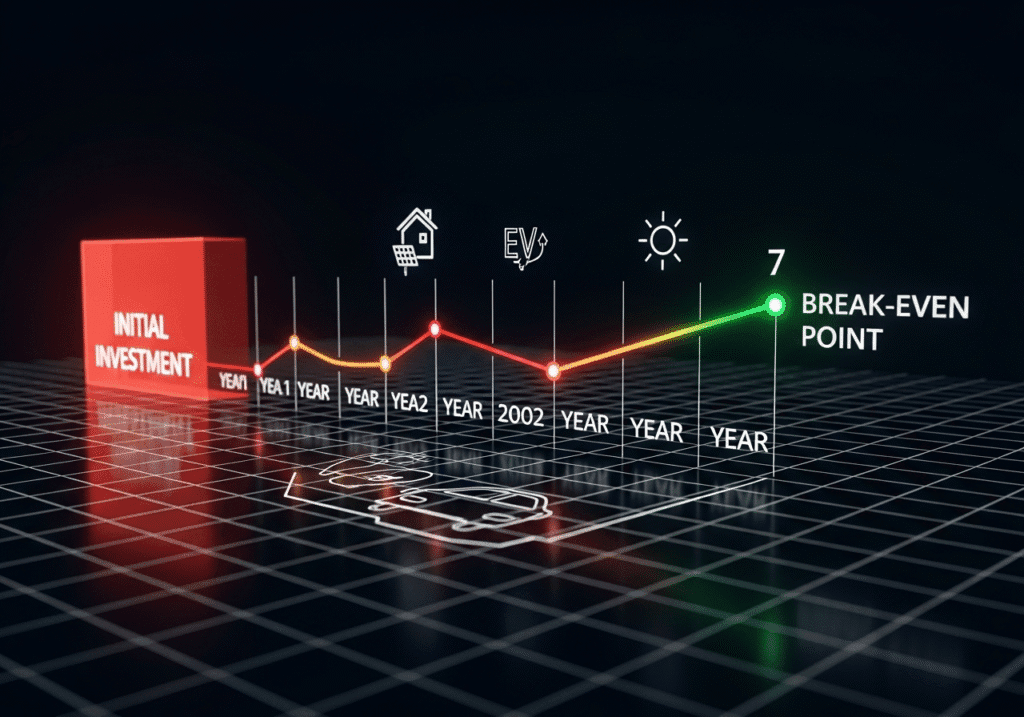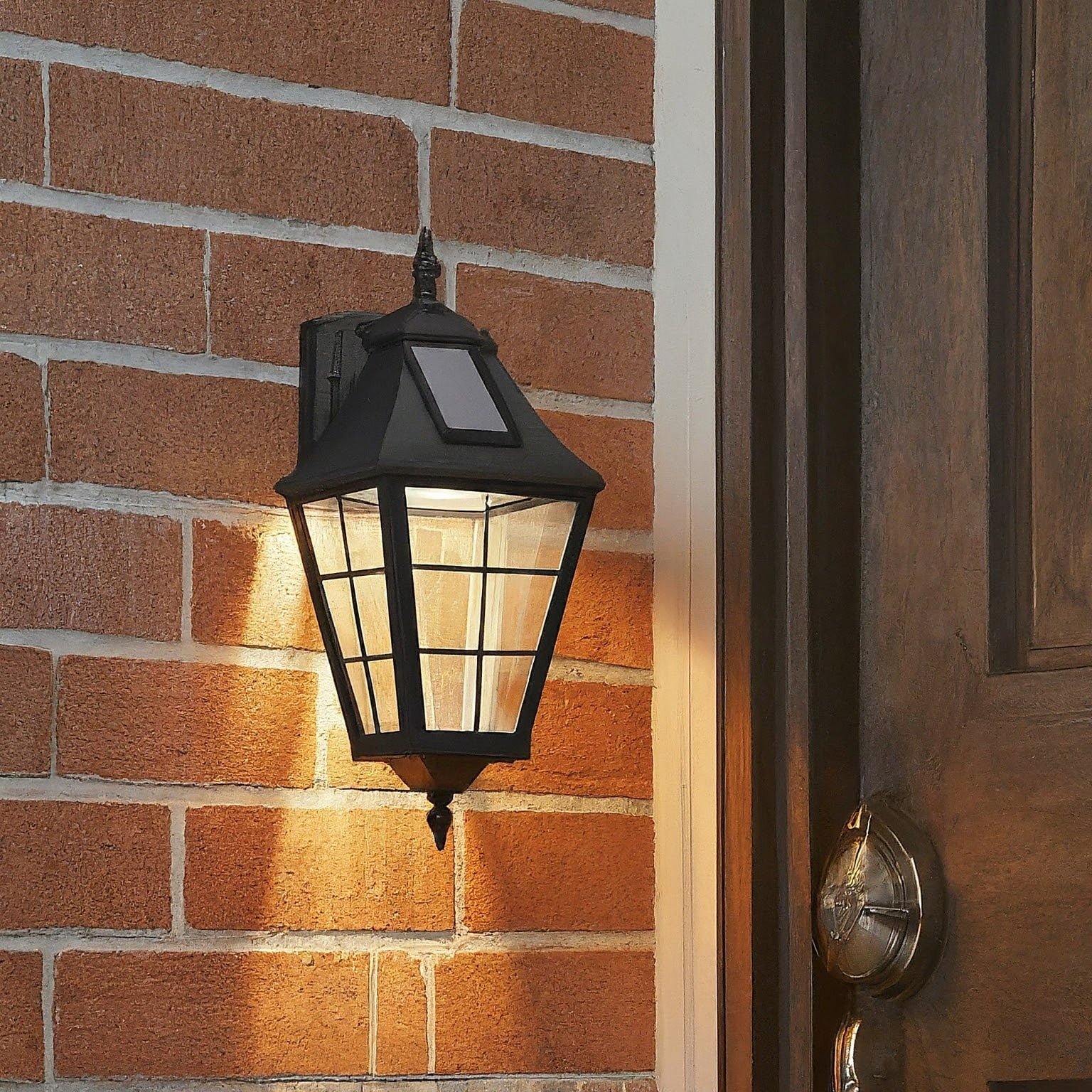You’ve probably tried other solar calculators. You enter your zip code and your electric bill, and they spit out two things: a system size and a big, scary price tag. They feel like a black box, leaving the most important question unanswered: “When do I actually get my money back?”
This is different.
Vecharged Solar Decision Engine
Your complete, personalized solar assessment.
Welcome to the Solar Payback Engine, the most transparent and useful solar calculator on the internet. This isn’t just a form; it’s a powerful financial simulator. As you adjust the simple “levers” below—your home’s real-world energy use, your EV status, your budget—you will see your entire financial picture update in real-time.
For the first time, you’re not just getting a generic estimate. You’re getting clarity. Adjust the levers and discover your true break-even point.
Your Live Solar Blueprint
Payback Period
— yrs
Your Break-Even Point
Recommended System
— kW
(~– Panels)
Estimated System Cost
$–
After 30% Federal Tax Credit
What is a Solar Calculator?
- At its core, a solar calculator is a tool that estimates how much energy a solar panel system could generate at your location.
- It also helps you calculate potential electricity savings, environmental impact, and the financial implications of going solar.
Key Factors Solar Calculators Consider
- Location: Your geographic location determines sunlight availability (solar irradiance) throughout the year.
- Roof Size and Orientation: Ideal solar installations require ample, unshaded roof space facing south.
- Energy Usage: Your electricity consumption history helps determine the size of solar system needed to offset your bill.
- Local Electricity Rates: Higher utility costs mean greater potential savings from going solar.
- Government Incentives and Rebates: Many areas offer tax credits or rebates, which can significantly reduce the upfront cost of solar panels.
How to Interpret Your Personalized Blueprint
You’ve used the solar calculator and have your results. But what do these numbers actually mean for you? Let’s break it down.
The Payback Period: Your “Freedom Point”
This is the single most important number on the dashboard. It represents your break-even point—the exact moment in time when your total savings from solar have completely paid off your initial investment. Think of it as the countdown to pure profit. For every day you own the system after this point, you are generating free electricity and putting money back into your pocket for the next 15-20 years.
Recommended System Size (kW): The Engine of Your Power Plant
Kilowatts (kW) measure the peak power output of your solar panels. A larger kW size means more panels and more energy production. Our solar calculator doesn’t just guess this number; it recommends a specific size based on your home’s square footage, your major appliance usage, and whether you need to power an EV. This ensures you are generating enough power to cover your specific lifestyle.
Recommended Battery Size (kWh): Your Personal Fuel Tank
Kilowatt-hours (kWh) measure energy storage—it’s the size of your battery’s “tank.” A battery allows you to store the free, clean energy you generate during the day and use it at night. Our calculator intelligently recommends a battery size based on your primary goal. A user focused on backup power will get a larger battery recommendation than someone focused purely on the fastest financial payback.
Estimated System Cost: The All-In Number
This is our estimate for a fully installed system, after the 30% Federal Tax Credit is applied. This number is calculated directly from your recommended system size and your choice of “Value,” “Balanced,” or “Premium” equipment. This gives you a realistic, all-in cost to expect.
Estimated Monthly Savings: The Engine of Your Payback
This number is a powerful combination of two things:
- The money you are no longer paying your utility company.
- The money you are no longer paying for gasoline (if you have an EV).
This is why toggling the “EV Charger” option has such a dramatic impact. The gasoline savings act as a powerful accelerator, significantly shortening your payback period.

Beyond the Solar Calculator: Other Key Factors to Consider
Your blueprint is a powerful estimate, but it’s the first step on your solar journey. Here are the other critical factors to understand.
- The Federal Solar Tax Credit: The Investment Tax Credit (ITC) is the most significant financial incentive available. It allows you to deduct 30% of the total cost of your system—including panels, battery, and installation—directly from your federal taxes. Our calculator has already factored this in to show you your true net cost.
- Net Metering & Local Incentives: Depending on your state, you may be able to sell any excess electricity your system generates back to the grid for a credit on your bill. This policy, called “Net Metering,” can further accelerate your savings. Always research your specific state and utility company’s policies.
- Financing & Solar Loans: Most homeowners don’t pay for their system in cash. Solar loans are widely available and often structured so that your monthly loan payment is less than your old electricity bill, allowing you to start saving from day one.
Your Next Step: From Estimate to Official Quote
This solar calculator is designed to give you the most accurate possible estimate to empower your decision-making. The next step is to get a firm, official quote from a qualified local installer who can perform a detailed site assessment of your specific roof and electrical setup.
Frequently Asked Questions (FAQ)
Q: How accurate is this solar calculator?
A: Our calculator is designed to be a highly accurate estimation tool. It uses industry-standard data for home energy usage, solar production, and installation costs. However, the final price and production will always depend on a professional on-site assessment.
Q: Do I really need a home battery?
A: If your goal is backup power during an outage, yes, a battery is essential. If your goal is purely to save money, a battery is highly recommended. It allows you to store your cheap solar power to use during expensive “peak” evening hours, maximizing your savings.
Q: What happens on cloudy days?
A: Your panels will still produce power on cloudy days, just less of it. A properly sized system accounts for the average number of sunny and cloudy days in your region to ensure you generate enough power annually to meet your goals.
Q: How long do solar panels actually last?
A: Modern solar panels are incredibly durable. Virtually all reputable brands come with a 25-year performance warranty, guaranteeing they will still produce at least 80-85% of their original power after 25 years of service.










